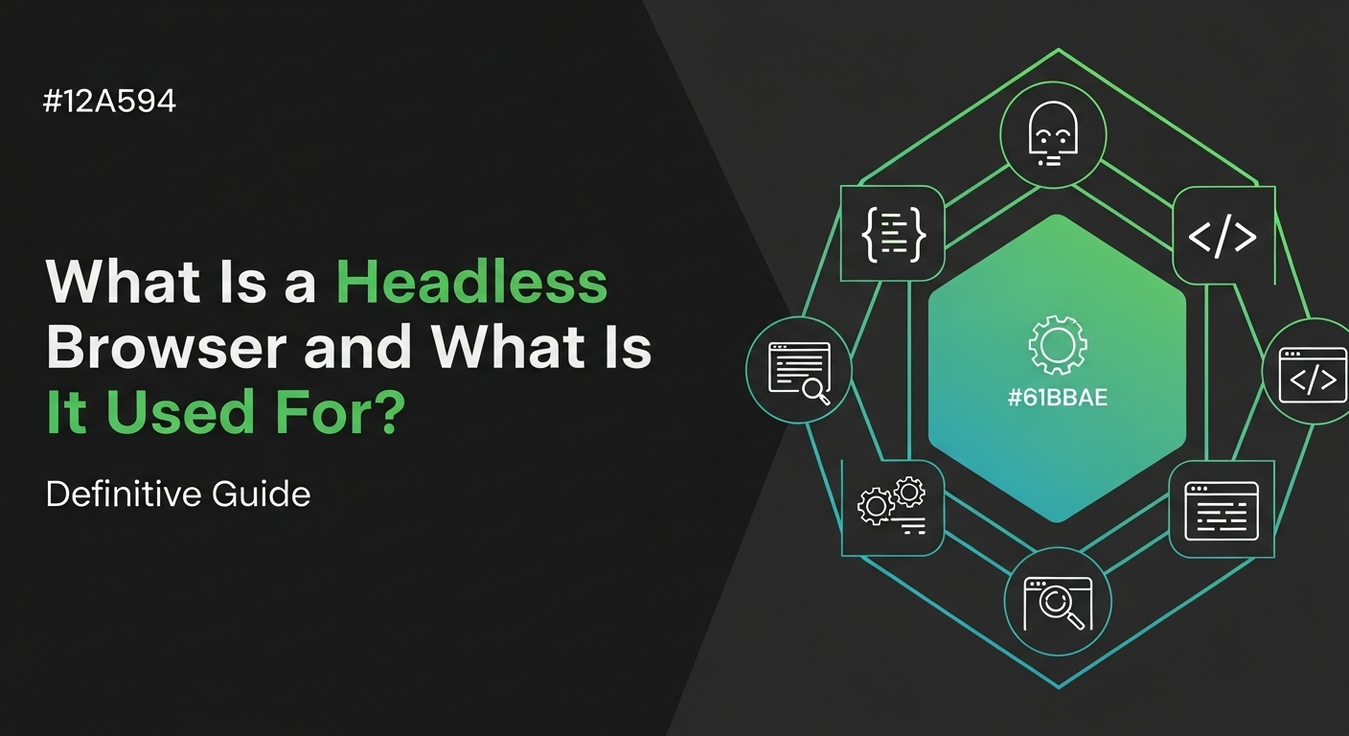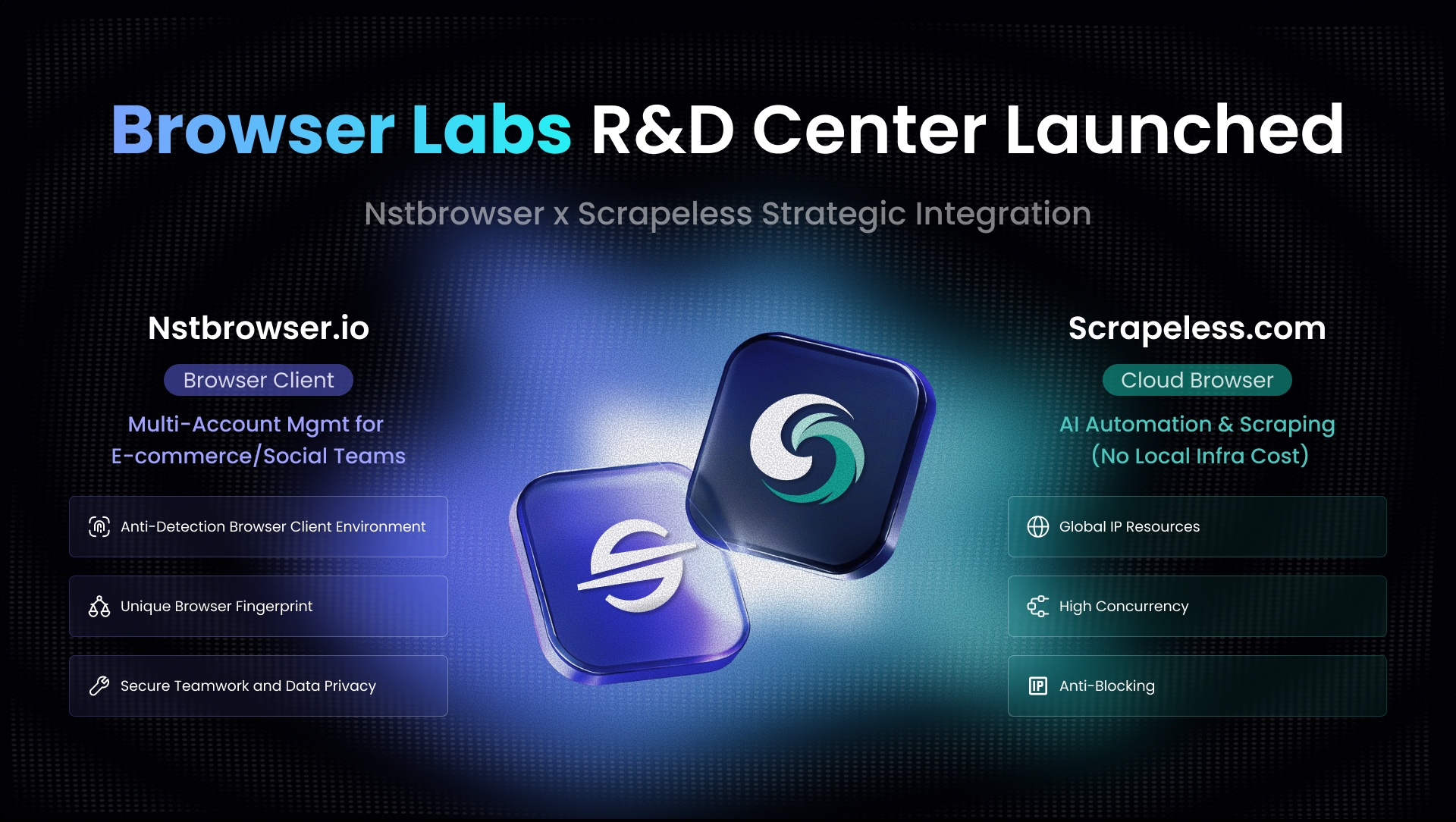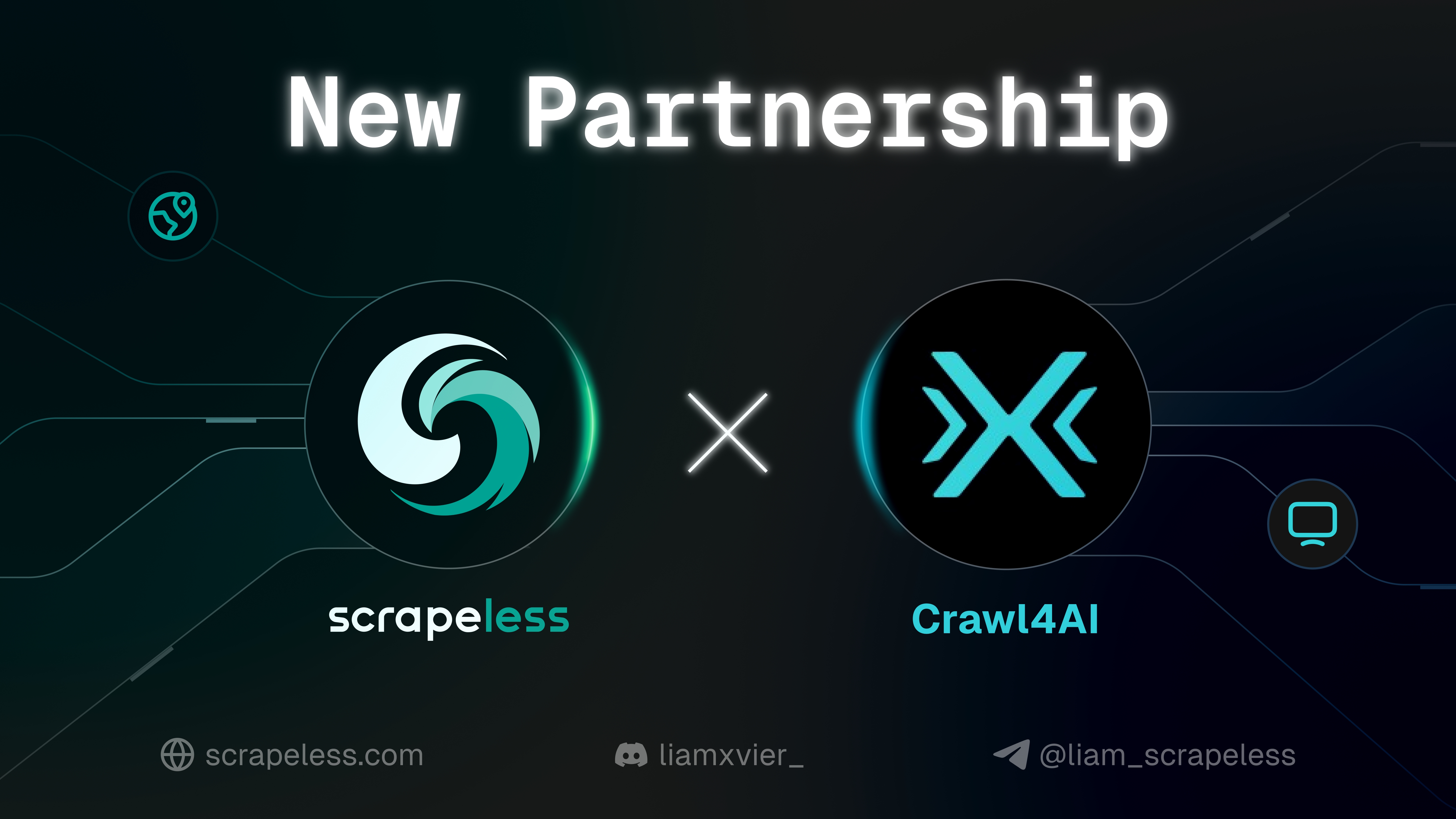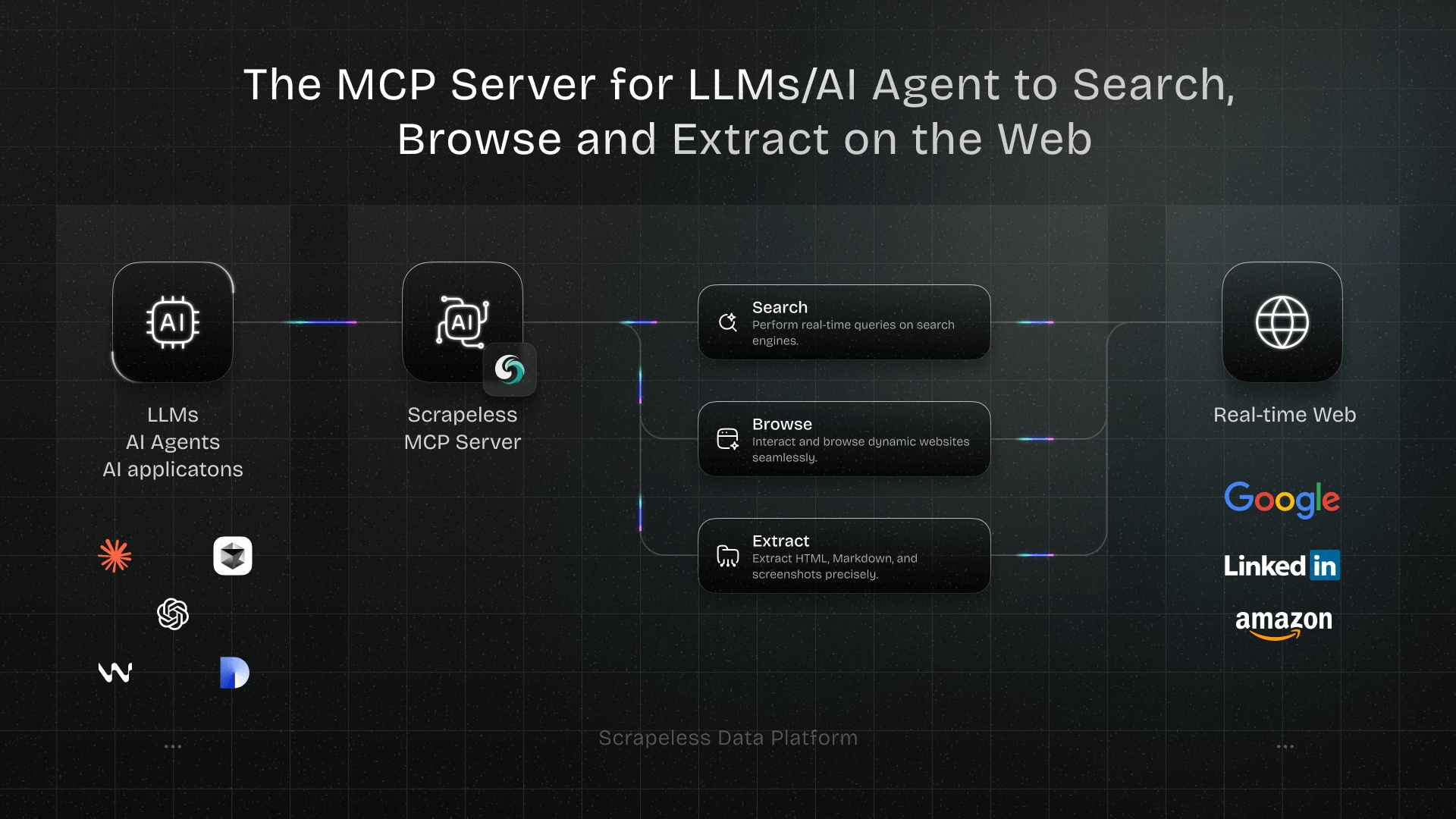What Is a Headless Browser and What Is It Used For? Definitive Guide 2025
Expert Network Defense Engineer
Key Takeaways:
- A headless browser is a web browser without a graphical user interface (GUI), controlled programmatically.
- It executes JavaScript, renders web pages, and interacts with web content in a virtual environment.
- Headless browsers are primarily used for automation tasks like web scraping, automated testing, and performance monitoring.
- Popular tools include Puppeteer, Playwright, Selenium (in headless mode), and Splash.
- They offer efficiency and speed for automated tasks but can be detected by anti-bot systems.
Introduction
A headless browser operates entirely in the background, without a visible window or GUI. It possesses all core browser functionalities: parsing HTML, executing JavaScript, rendering web pages, and interacting with web elements. This guide explores what a headless browser is, its diverse applications, popular tools, and its advantages and limitations in 2025.
What Exactly Is a Headless Browser?
A headless browser is a web browser without a graphical user interface (GUI). It functions like a regular browser but without visual components, exposing an API for programmatic control. This allows it to navigate URLs, execute JavaScript, interact with elements, and capture content (HTML, screenshots, PDFs) programmatically. Because it executes JavaScript, it can render dynamic content invisible to traditional HTTP request libraries, making it crucial for modern, JavaScript-heavy websites.
Headless vs. Headed Browsers
Both headless and headed browsers share the same underlying browser engine (e.g., Chromium, Gecko). The key difference is the GUI: headed browsers are for human interaction, while headless browsers are for automated, programmatic interaction without visual output.
What Is a Headless Browser Used For? Key Applications
Headless browsers are versatile tools for automating browser interactions and executing JavaScript without human intervention. Key applications include:
1. Web Scraping and Data Extraction
Headless browsers are essential for scraping modern, JavaScript-heavy websites. They can render dynamic content (AJAX, SPAs), bypass some anti-scraping measures by mimicking real browsers, and interact with web elements (clicks, forms) to access protected content. For example, scraping e-commerce sites with dynamically loaded prices.
2. Automated Testing (UI/E2E Testing)
They are fundamental for UI and E2E testing. Headless browsers simulate user interactions, run tests in CI/CD pipelines without a GUI, and enable cross-browser testing across different engines (Chromium, Firefox, WebKit).
3. Performance Monitoring and Web Analytics
Headless browsers help monitor website performance by accurately measuring page load times, capturing metrics like FCP and LCP, and generating visual snapshots for performance analysis.
4. Generating Content and Reports
They can programmatically generate content such as converting HTML to high-quality PDFs, taking full-page screenshots, or automating complex reports by extracting data from web dashboards.
5. SEO Monitoring and Auditing
Headless browsers assist in SEO by crawling JavaScript-rendered sites (mimicking search engine crawlers), checking for broken links, and monitoring page changes crucial for competitive analysis.
Popular Headless Browser Tools and Libraries
Several powerful tools enable headless browser capabilities, each with unique strengths:
1. Puppeteer (Node.js)
- Description: Google-developed Node.js library controlling Chrome/Chromium via DevTools Protocol.
- Key Features: Fine-grained control, modern JavaScript support, built-in screenshot/PDF generation.
2. Playwright (Node.js, Python, Java, .NET)
- Description: Microsoft's framework for Web Testing and Automation, supporting Chromium, Firefox, and WebKit with a single API.
- Key Features: Multi-browser support, auto-waiting, robust selectors, network interception.
3. Selenium (Python, Java, C#, Ruby, JavaScript)
- Description: Controls various browsers in headed and headless modes, widely adopted for web application testing.
- Key Features: Broad language support, extensive community, simulates complex user interactions.
4. Splash (Python, Lua)
- Description: A lightweight, scriptable headless browser running on a server, often used with Scrapy.
- Key Features: HTTP API for rendering, Lua scripting, screenshot generation, network request filtering.
5. Headless Chrome/Firefox (Native)
- Description: Modern browser versions offering native headless modes directly from the command line.
- Key Features: No external libraries needed, direct access to browser capabilities.
Advantages of Headless Browsers
Headless browsers offer significant advantages for automation and development:
- Efficiency and Speed: Faster task execution due to no GUI rendering overhead, saving CPU and memory.
- Automation of Complex Tasks: Enables automation of JavaScript-dependent interactions (SPAs, forms, authentication) impossible with simple HTTP requests.
- Server-Side Execution: Ideal for CI/CD pipelines and backend services without a display.
- Reproducibility and Consistency: Ensures consistent, reliable interactions for testing and data collection.
- Debugging Capabilities: Tools offer powerful remote debugging features, even without a visual interface.
Limitations and Challenges of Headless Browsers
Despite their benefits, headless browsers have limitations:
- Resource Consumption: Still consume significant CPU/memory, especially at scale, requiring robust infrastructure.
- Anti-Bot Detection: Highly susceptible to sophisticated anti-bot systems that analyze browser fingerprints and JavaScript execution patterns, leading to CAPTCHAs or blocks [1].
- Setup and Maintenance Complexity: Involves installing binaries, managing drivers, and continuous adaptation to browser/anti-bot changes.
- Debugging Difficulties: More challenging without a visual interface, despite remote debugging tools.
- Slower for Simple Tasks: Unnecessary overhead for static HTML or simple API calls; direct HTTP libraries are faster.
- Ethical and Legal Considerations: Aggressive scraping can lead to legal issues or IP blacklisting; responsible use is crucial.
Headless vs. Traditional Browsers: A Comparison
| Feature | Headless Browser | Traditional (Headed) Browser |
|---|---|---|
| GUI | None (operates in background) | Full graphical user interface |
| Primary Use | Automation (testing, scraping, monitoring) | Human interaction (browsing, consuming content) |
| Resource Usage | Lower (no GUI rendering), but still significant | Higher (GUI rendering, visual output) |
| Speed | Faster for automated tasks | Slower for automated tasks (due to GUI overhead) |
| Interaction | Programmatic (via API) | Manual (mouse, keyboard) |
| JavaScript Exec. | Yes | Yes |
| Visual Output | Screenshots, PDFs, rendered HTML (programmatic) | Real-time visual display |
| Debugging | More challenging (remote debugging tools) | Easier (direct visual inspection) |
| Anti-Bot Detect. | More susceptible to detection (often targeted) | Less susceptible (mimics human behavior naturally) |
| Environment | Servers, CI/CD pipelines, cloud | Desktops, laptops, mobile devices |
Why Scrapeless is Your Best Alternative
Headless browsers present challenges like resource management, complex setup, anti-bot evasion, and debugging. Scrapeless, a Web Unlocking API, offers a superior alternative by abstracting these complexities.
How Scrapeless Simplifies Headless Browser Challenges:
- Zero Infrastructure Management: No need to set up or maintain headless browsers, drivers, or proxies. Scrapeless manages all infrastructure.
- Automated Anti-Bot and CAPTCHA Bypass: Integrates advanced evasion techniques (IP rotation, browser fingerprinting, CAPTCHA solving) to bypass detection.
- Simplified Development: Replaces complex headless browser code with simple HTTP requests to the Scrapeless API, returning fully rendered HTML or structured data.
- Scalability and Reliability: Built for large-scale data extraction, offering consistent performance and high uptime without operational concerns.
- Cost-Effectiveness: Often more cost-effective than building and maintaining custom headless browser solutions, saving development and maintenance costs.
Scrapeless provides the benefits of headless browsing—JavaScript execution, dynamic content rendering, and web interaction—without the associated headaches, making it a definitive choice for modern web scraping and automation.
Conclusion
Headless browsers are indispensable for automating web tasks requiring JavaScript execution and dynamic content interaction. They are crucial for web scraping, automated testing, performance monitoring, and content generation.
However, they come with challenges: resource consumption, anti-bot detection, and maintenance. Choosing the right tool requires careful consideration of these factors.
For those seeking headless browsing power without the complexities, specialized Web Scraping APIs like Scrapeless offer a compelling solution. By abstracting infrastructure, anti-bot evasion, and JavaScript rendering, Scrapeless provides a streamlined, scalable, and reliable path to web data access.
Ready to unlock the full potential of web automation?
Don't let headless browser management complexities hinder your projects. Discover how Scrapeless can simplify your workflow and provide reliable access to the web data you need. Start your free trial today and experience the future of web scraping and automation.
Start Your Free Trial with Scrapeless Now!
Frequently Asked Questions (FAQ)
Q1: Is a headless browser faster than a regular browser?
Yes, generally. Headless browsers are faster for automated tasks because they lack GUI rendering overhead, saving CPU and memory. This allows quicker processing of web pages in automated testing or data extraction.
Q2: Can headless browsers be detected by websites?
Yes. Modern anti-bot systems often detect headless browsers by analyzing browser fingerprints, JavaScript execution patterns, and network requests. While tools offer stealth features, it remains a continuous challenge against evolving anti-bot technologies [1].
Q3: What is the difference between Puppeteer and Playwright?
Puppeteer (Google) is a Node.js library for Chrome/Chromium. Playwright (Microsoft) supports Chromium, Firefox, and WebKit with a single API across multiple languages. Playwright is often considered more modern with better cross-browser support and auto-waiting, while Puppeteer has a larger community and Chrome integration.
Q4: When should I use a headless browser versus a simple HTTP request library?
Use a headless browser when: the website relies heavily on JavaScript (SPAs, AJAX), you need to simulate complex user interactions (clicks, forms), or you need screenshots/PDFs. Use a simple HTTP library when: the website serves static HTML, you interact with a well-defined API, and performance is paramount without JavaScript rendering.
Q5: Are headless browsers legal for web scraping?
The legality is complex, depending on website terms, data type, jurisdiction, and purpose. While ethical uses like testing are accepted, aggressive or unauthorized scraping can lead to legal action or IP bans. Always review policies and seek legal advice if unsure.
References
At Scrapeless, we only access publicly available data while strictly complying with applicable laws, regulations, and website privacy policies. The content in this blog is for demonstration purposes only and does not involve any illegal or infringing activities. We make no guarantees and disclaim all liability for the use of information from this blog or third-party links. Before engaging in any scraping activities, consult your legal advisor and review the target website's terms of service or obtain the necessary permissions.



